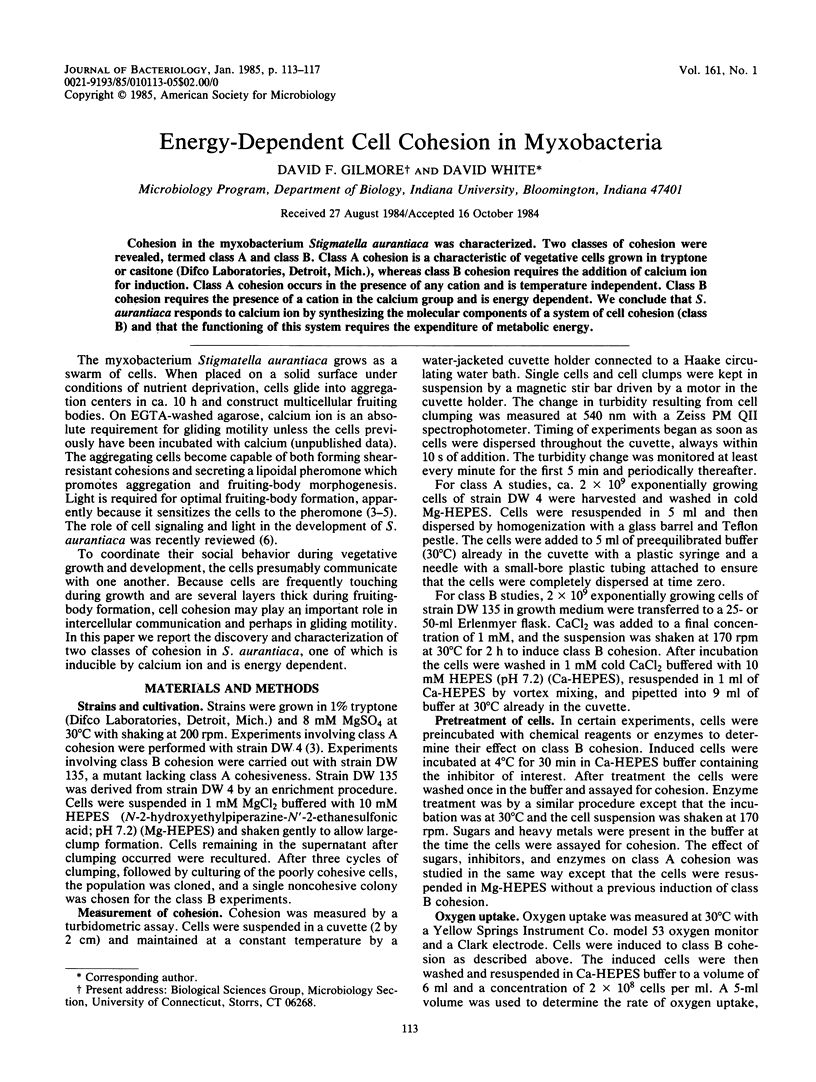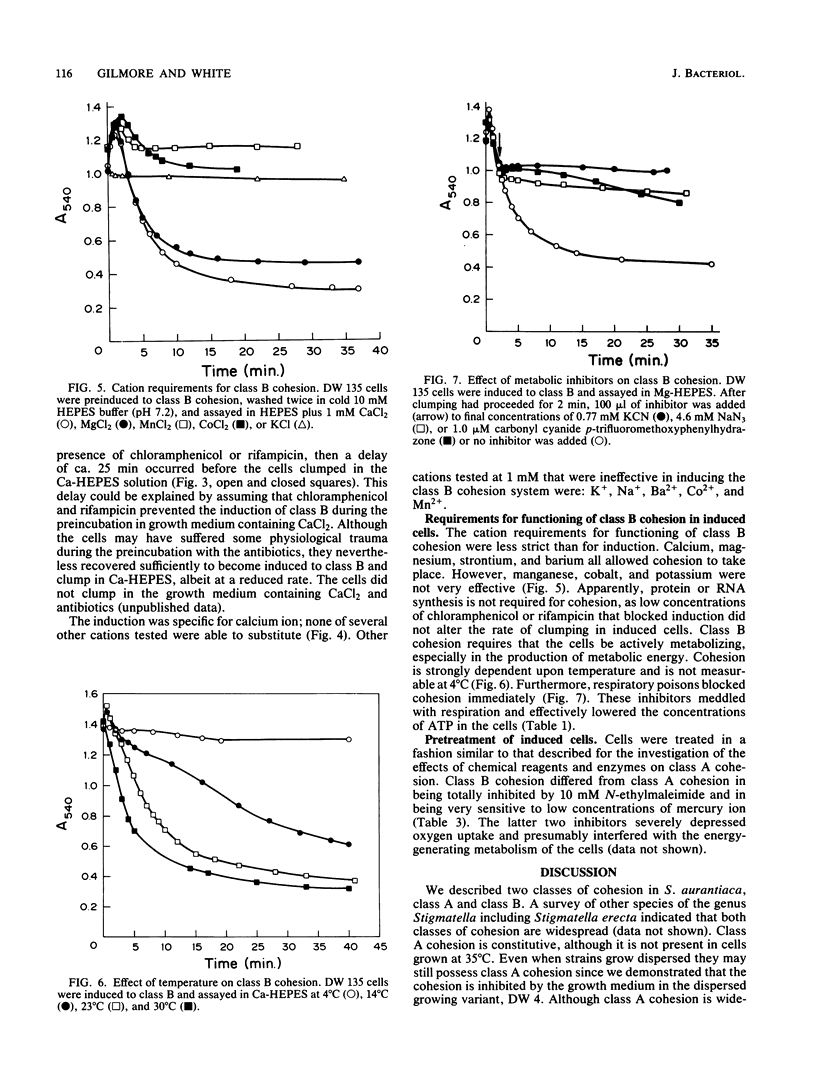Abstract
Cohesion in the myxobacterium Stigmatella aurantiaca was characterized. Two classes of cohesion were revealed, termed class A and class B. Class A cohesion is a characteristic of vegetative cells grown in tryptone or casitone (Difco Laboratories, Detroit, Mich.), whereas class B cohesion requires the addition of calcium ion for induction. Class A cohesion occurs in the presence of any cation and is temperature independent. Class B cohesion requires the presence of a cation in the calcium group and is energy dependent. We conclude that S. aurantiaca responds to calcium ion by synthesizing the molecular components of a system of cell cohesion (class B) and that the functioning of this system requires the expenditure of metabolic energy.
Full text
PDF




Selected References
These references are in PubMed. This may not be the complete list of references from this article.
- Kimmich G. A., Randles J., Brand J. S. Assay of picomole amounts of ATP, ADP, and AMP using the luciferase enzyme system. Anal Biochem. 1975 Nov;69(1):187–206. doi: 10.1016/0003-2697(75)90580-1. [DOI] [PubMed] [Google Scholar]
- LOWRY O. H., ROSEBROUGH N. J., FARR A. L., RANDALL R. J. Protein measurement with the Folin phenol reagent. J Biol Chem. 1951 Nov;193(1):265–275. [PubMed] [Google Scholar]
- Stephens K., Hegeman G. D., White D. Pheromone produced by the myxobacterium Stigmatella aurantiaca. J Bacteriol. 1982 Feb;149(2):739–747. doi: 10.1128/jb.149.2.739-747.1982. [DOI] [PMC free article] [PubMed] [Google Scholar]
- Stephens K., White D. Morphogenetic effects of light and guanine derivatives on the fruiting myxobacterium Stigmatella aurantiaca. J Bacteriol. 1980 Oct;144(1):322–326. doi: 10.1128/jb.144.1.322-326.1980. [DOI] [PMC free article] [PubMed] [Google Scholar]


